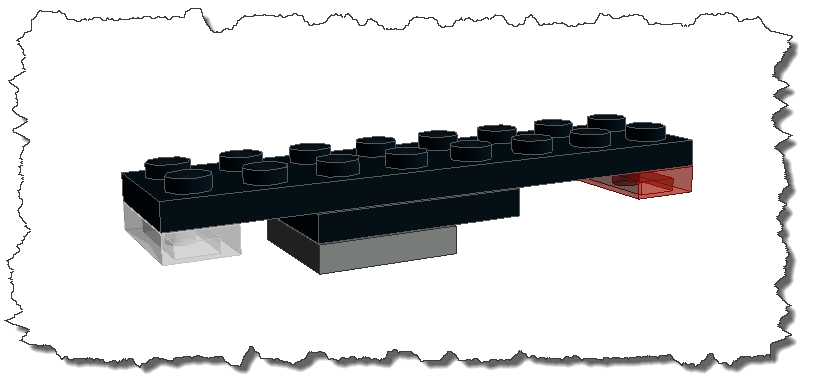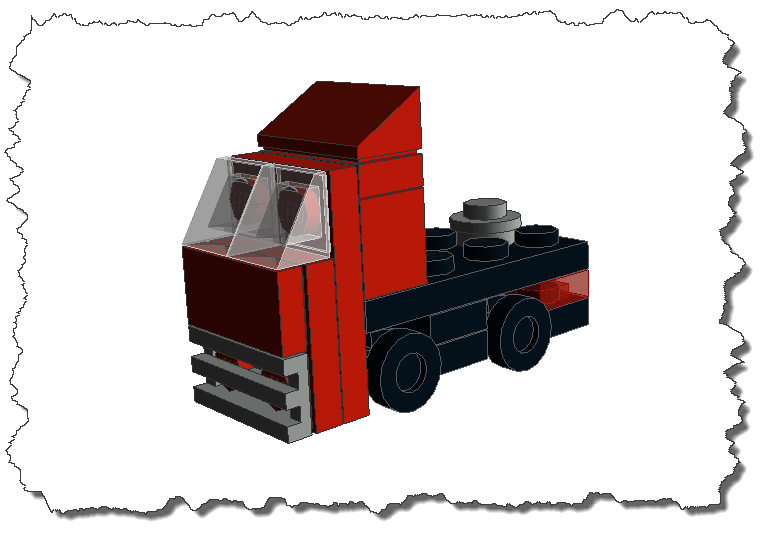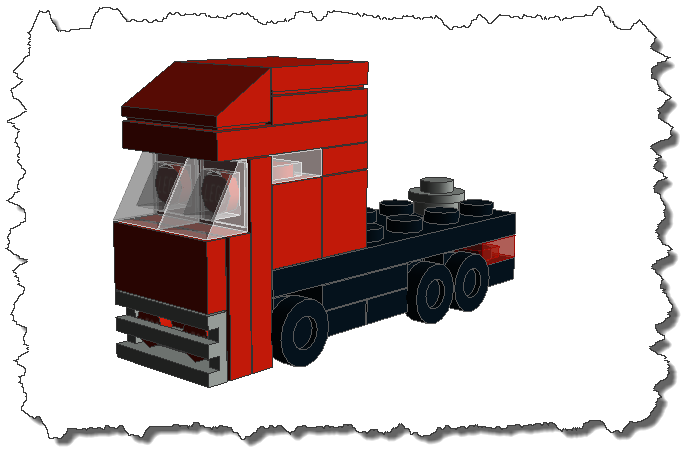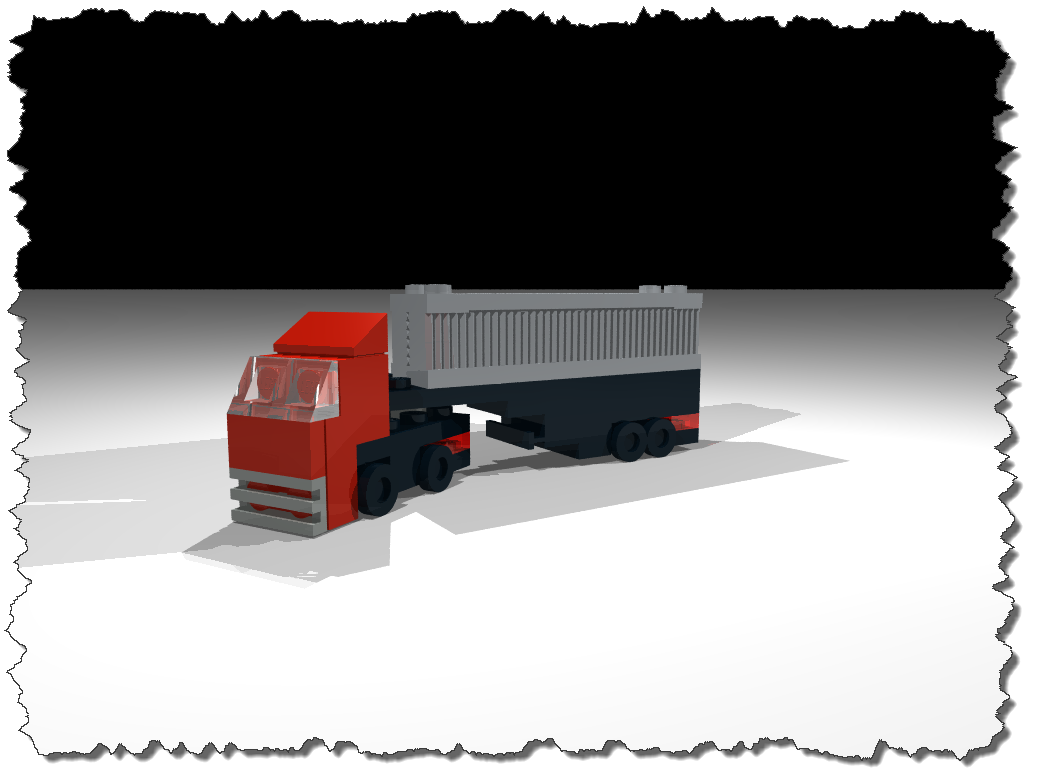In my last post I introduced you to the LEGO Midi-scale building – and one of the things I mentioned was that while you can rely on a large and active community, everyone is out there for himself.
Today, I would like to add to the Shovel I have created in the last post – these are not related in any particular way to the construction topic the shovel comes from: I am looking at trucks in general.
There are several different kinds of trucks and each one comes in a myriad of styles – in my small mid-scale world, it would be nice if my trucks could mimic this diversity – but first, I need to find out more about trucks.
American Style or European Style?
American-style trucks – such as the Peterbilt or the Kenworth – come with a considerable “front section”. The European-style models such as the Scania or Mercedes Actros come with a “stubnosed” front section.
Short or long Cabin?
Also, the size of the driver’s cabin varies in depth – some are short (merely some room behind the driver), some are deeper (holding a sleeping place) and some are large and very large (holding an entire living space).
Trailer
Finally, one has to think about the trailer – a simple cargo trailer? A flat car to load a cargo container? Maybe a trailer with a cooler?
So let’s built a Truck…
First, I need to mention that I have taken the original idea for the truck from the book mentioned before. I early on decided to separate the Truck and the Trailer using different MLCad Projects and combine them later in a multi-model project.
Let’s get started with a American-style Truck first – here we go: the base of the truck is formed by a 2×8 plate. Mounted beneath is a transparent clear and a transparent red 1×2 plate serving as front lights and rear lights. The middle section is built from a 2×3 plate and a 2×2 plate.
 Next, the wheels are mounted: to construct them, I am using 1×2 plates with handles and small wheels. Our American-style truck has three pairs of wheels – and this is what it looks like.
Next, the wheels are mounted: to construct them, I am using 1×2 plates with handles and small wheels. Our American-style truck has three pairs of wheels – and this is what it looks like.
 So far, the lower section of the truck can serve just any bigger vehicle, nit necessarily a truck. Next, we are turning the Truck into a Truck: two 1×2 plates with single stubs form the nose section. A transparent clear brick the window part and a 2×2 brick the cabin itself.
So far, the lower section of the truck can serve just any bigger vehicle, nit necessarily a truck. Next, we are turning the Truck into a Truck: two 1×2 plates with single stubs form the nose section. A transparent clear brick the window part and a 2×2 brick the cabin itself.
 Finally, additional 1×2 tiles and one 2×2 tile make up for the finishing – the trailer lateron will be mounted on a round 1×1 plate in the rear.
Finally, additional 1×2 tiles and one 2×2 tile make up for the finishing – the trailer lateron will be mounted on a round 1×1 plate in the rear.
 The trailer is based upon two 2×6 plates – making up for a very long road train. Consider the connection to the Truck: the truck is three plates high with wheels at the bottom. Then, the mount point sits on top which makes a total of four plates in hight before we can reach the mount point.
The trailer is based upon two 2×6 plates – making up for a very long road train. Consider the connection to the Truck: the truck is three plates high with wheels at the bottom. Then, the mount point sits on top which makes a total of four plates in hight before we can reach the mount point.
 If you assemble both parts and render them in POVRay, this is the result:
If you assemble both parts and render them in POVRay, this is the result:
 Not too bad at all… but this is an American-style truck – so let’s see if we can use what we have learned (the construction of the base part, the mounting of the wheels, etc.) to build a European-style truck:
Not too bad at all… but this is an American-style truck – so let’s see if we can use what we have learned (the construction of the base part, the mounting of the wheels, etc.) to build a European-style truck:
The base for the European-style Truck is universal – but we will be applying a different technique to get the entire front part created and mounted. As the Truck will be shorter than its American counterpart, the base is formed by a 2×4 plate. The rear end receives a 1×2 transparent red plate (which also serves as mount for the rear axle) – the front axle us mounted on another 1×2 plate – altogether, the hight of the base is again three plates.
 Next, we are going to create the front section. And we are using the SNOT Technique for this (SNOT means “Studs not on top” – in other words: we are changing the direction we are building in).
Next, we are going to create the front section. And we are using the SNOT Technique for this (SNOT means “Studs not on top” – in other words: we are changing the direction we are building in).
The front is created from a 2×3 plate, a 2×2 plate and one 1×2 tile – enriched with a 1×2 grille and two transparent clear slope bricks.
 The approach is extremely flexible: using the same base but a different front part and then using a 2×6 plate as ba
The approach is extremely flexible: using the same base but a different front part and then using a 2×6 plate as ba
 So I think you are getting the drift: what your models eventually will look like… is up to you. Some techniques (such as SNOT) and basic “agreements” (such as the base being three plates high plus wheels) may stay in force across your models to make sure they end up with the same scale – the rest is yours.
So I think you are getting the drift: what your models eventually will look like… is up to you. Some techniques (such as SNOT) and basic “agreements” (such as the base being three plates high plus wheels) may stay in force across your models to make sure they end up with the same scale – the rest is yours.
I also created a flat trailer car to hold a cargo container later – this one is based upon the ideas of the earlier trailer but is my own creation:
 Finally, we are in need for some cargo container itself – here, I fall back on my book because I like the idea of the container issued there. A very simple model, after all…
Finally, we are in need for some cargo container itself – here, I fall back on my book because I like the idea of the container issued there. A very simple model, after all…
 So we are slowly getting there – we got the European-style Truck, a flat trailer and a cargo container… now let’s put it together.
So we are slowly getting there – we got the European-style Truck, a flat trailer and a cargo container… now let’s put it together.
After all – a pretty good result for relatively easy work – the model is about 9cm long, maybe a bot over 1 cm wide and 3.5 cm in height. And ready to roam the roads…

